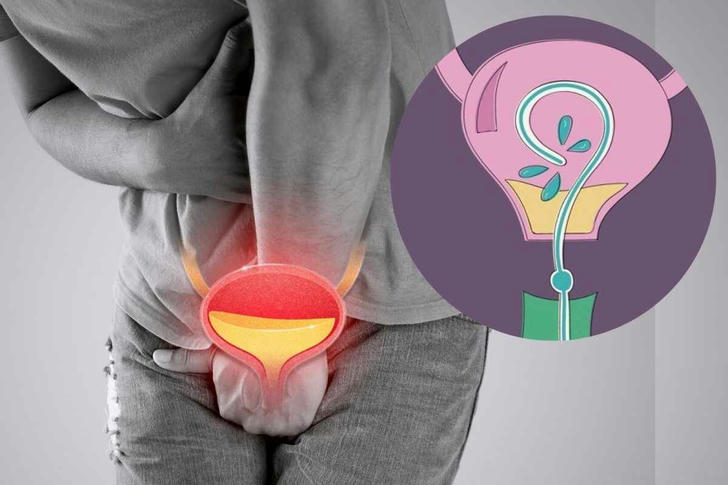Advances in Bladder Cancer Treatment: Detection, Diagnosis, and Effective Options
Bladder cancer early symptoms, treatment options and pain relief!
Bladder cancer can start quietly, often showing only small signs that are easy to miss. But with more people becoming aware of it, and with new treatments emerging, there’s real progress in how the condition is managed. Knowing what to look out for early, what treatments are available, and how to support the body through lifestyle choices can all make a difference.

Common Early Signs to Watch For
Bladder cancer doesn’t always cause pain right away. That’s why paying attention to changes in urination or discomfort is important. Some early signs include:
• Blood in urine — sometimes visible, sometimes only detected through tests
• Going to the bathroom more often
• A burning feeling when urinating
• Pain in the lower belly or lower back
• Feeling like the bladder doesn’t empty completely
These signs don’t always mean cancer, but they do need checking by a doctor.
How Doctors Find Bladder Cancer
If bladder cancer is suspected, doctors use a few tests to confirm it:
• Urine tests to find abnormal cells
• Cystoscopy, where a small camera looks inside the bladder
• Imaging scans like CT or ultrasound to see tumors
• Biopsy, where a small tissue sample is tested
The goal is to find the cancer early and learn how far it has spread.
Treatment Options Based on Stage
Bladder cancer is treated differently depending on how deep it has grown and whether it has spread. Here's a simple breakdown:
Early-Stage (Stage 0–I)
• Surgery (TURBT): Tumors are removed through the urethra without cutting into the body.
• Bladder treatments: Medicines are put directly into the bladder (like BCG or chemotherapy).
• Goal: Remove cancer while keeping the bladder.
Mid-Stage (Stage II–III)
• Surgery: May involve removing part or all of the bladder.
• Chemotherapy or radiation: Can be used before or after surgery to shrink tumors or stop return.
• Options: Some people can keep their bladder with a mix of treatments.
Advanced Stage (Stage IV)
Cancer has spread: Treatment focuses on slowing it down and easing symptoms.
• Immunotherapy: Boosts the immune system to fight cancer cells.
• Targeted drugs: For cancers with specific genetic changes.
• Clinical trials: Offer access to new treatments in testing.
Newer and Promising Treatment Options
Modern research is bringing in new tools for fighting bladder cancer:
Immunotherapy
• Uses the body’s immune system to find and destroy cancer cells.
• Some people with advanced bladder cancer respond well, especially after other treatments stop working.
Targeted Therapy
• Works on cancer cells with specific gene changes.
• A drug like Erdafitinib may be used if certain mutations are present.
Antibody–Drug Conjugates
• These combine precision targeting with chemotherapy.
• May help when cancer has returned or spread after other treatments.
Daily Habits That Support Recovery
Medical treatment is essential, but daily habits can also help the body handle cancer better. While they don’t replace treatment, they can support overall well-being.
Helpful Lifestyle Changes:
• Stay active: Light walking, stretching, or yoga may help with fatigue and mood.
• Quit smoking: Smoking is a leading cause of bladder cancer and can affect treatment.
• Manage stress: Try breathing exercises, journaling, or quiet hobbies.
• Stay hydrated: Drinking enough water helps keep the bladder healthy.
Foods That May Help:
• Cruciferous vegetables like broccoli, cabbage, and cauliflower contain natural compounds that support cell health.
• Berries for antioxidants
• Lean proteins (chicken, tofu, beans) help with healing
• Whole grains instead of refined carbs
• Green tea may offer mild anti-inflammatory benefits
Avoid:
• Processed meats (like bacon or sausages)
• Excessive red meat
• Smoking or alcohol (especially in large amounts)
Pain Management Strategies
Pain is a common issue for Crohn’s patients, and managing it effectively depends on the source and severity. Options include:
Acetaminophen – recommended over NSAIDs, which can worsen gastrointestinal symptoms.
Antispasmodics – used to ease abdominal cramps.
Local treatments – such as warm compresses or sitz baths, especially for perianal pain.
Non-drug methods – mind-body practices, acupuncture, gentle physical activity, heat therapy, diet adjustments and sleep improvement.
Common Myths and Facts About Bladder Cancer
Understanding what’s true and what’s not can reduce worry and lead to better decisions.
🩺Myth 1: Blood in the urine always means an infection.
Fact: It could also be an early sign of bladder cancer. Always seek testing.
🩺Myth 2: Only smokers get bladder cancer.
Fact: Smoking raises risk, but anyone can develop bladder cancer.
🩺Myth 3: Surgery always removes the entire bladder.
Fact: Not always. Early cases often preserve bladder function.
🩺Myth 4: No pain means no cancer.
Fact: Many early cases cause no discomfort.
🩺Myth 5: Treatment cures bladder cancer permanently.
Fact: Bladder cancer may return, so regular follow-up is important.
Conclusion
Advancements in bladder cancer care—from early diagnostic tools to promising immunotherapy and targeted drugs—are changing how the disease is managed. Personalized treatment guided by genetic insights allows for more precise interventions.
